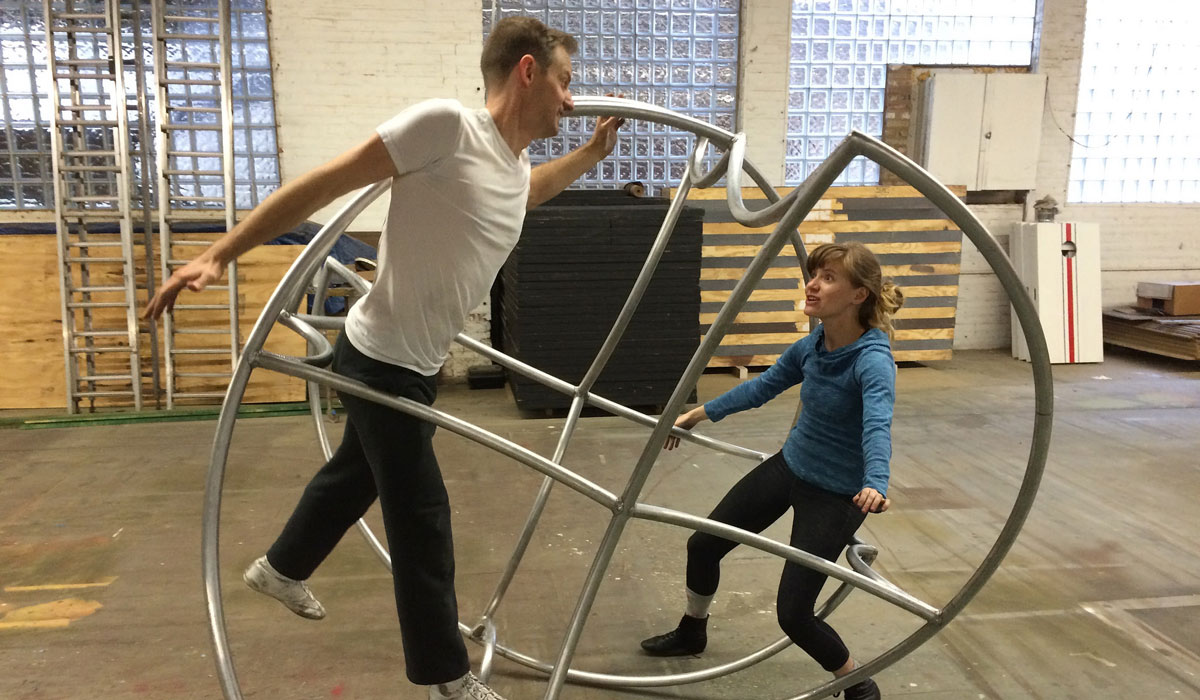OSU faculty members develop new circus apparatus
Monday, November 21, 2016

Two Oklahoma State University faculty members turned a chance meeting into an opportunity to offer something new to excite circus-goers.
Lee Brasuell, production manager & technical director in the department of theater, and Henry Segerman, an assistant professor in the Department of Mathematics, met three years ago during a new faculty orientation. Segerman noticed Brasuell drawing sketches and spoke to him after the meeting.
“Henry mentioned he had been developing concepts for some circus apparatuses and asked if I would look over them,” Brasuell said. “We eventually met to start talking about how to integrate circus performers into them.”
Segerman’s interest in designing new devices for circus performers was sparked when he met with internationally renowned circus artist Marco Paoletti in 2011. The two discussed a rolling apparatus that allowed performers to move continuously within the structure.
“The design for the Tao-Line came out of those ideas of a rolling apparatus,” Segerman said. “In the Tao-Line, the performer can roll in a straight line along the stage but at certain points can go off on a different path by shifting their body weight.”
Segerman gave Brasuell a 3-D computer model and a scale model of the Tao-Line, which allowed him to analyze its technical aspects. The model also provided Brasuell the opportunity to share the concept with others.
“Henry was gracious enough to give me the blueprint of the design and a 3-D printed scale, and I took that to different performers I knew across the country,” Brasuell said. “Initially, it was designed as a ground apparatus, but we discovered it would also work as an aerial apparatus.”
As the concept of the Tao-Line continued to develop, Brasuell began to search for funding.
“We were doing a lot of great research on the movements and balance points, but we didn’t have any funding,” Brasuell said. “I started writing proposals. I received a DaVinci Fellowship, and that was the seed money to get us going.”
After receiving funding, the next challenge was to find a manufacturer capable of building a working model. The Tao-Line has no square corners, making it difficult to build. Eventually, Brasuell found the Chicago Fly House, a company able to produce the prototype.
Over the summer, Brasuell made a few trips to Chicago to ensure production was on schedule. In October, the Tao-Line prototype was delivered to campus. Since its delivery, the Tao-Line has been tested by performers and evaluated. Brasuell admits there is still work to be done.
“As an aerial apparatus, there’s a lot of structural analysis we have to do to the hardware and the splicing so when it’s up in the air it will take the shock loads put on it by the aerial artists,” Brasuell said. “It’s going to take time because none of this is off-the-shelf. It’s all custom-made.”
Brasuell and Segerman know there might not be a large market for the Tao-Line apparatus, but that was never the purpose for its development.
“The goal for me was to just get it out to the circus and performer community so they had something new and unique,” Brasuell said. “I already have a few that want to use it for specific shows, and I think people can use it to tell a story.”
Story by Catherine Wilson
PHOTOS: https://flic.kr/p/PhoUMH
